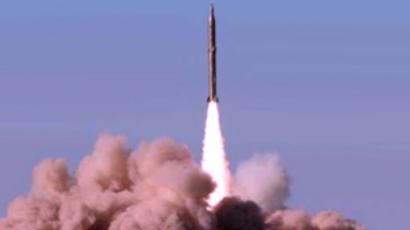RT explores the relics of the Soviet push for atomic supremacy
Sixty years after the beginning of the nuclear era a place, hidden among the bamboo trees, still has holds many secrets. The story of Germans behind the Soviet Union’s very own Manhattan Project is just one of them.
It was an event that would mark the beginning of the atomic age. 65-years ago a test, code-named Trinity, would see the US win the race to produce a nuclear weapon.
America spent the modern-day equivalent of more than $20 billion on the project, in a bid to beat off international rivals.
It was the culmination of the Manhattan Project. The first American nuclear explosive device, nicknamed “The Gadget,” went off in New Mexico just weeks before devastating the Japanese city of Hiroshima.
Many, including the godfather of the Atomic Bomb, J. Robert Oppenheimer, were terrified by the power of the deadly mushroom cloud.
“We knew the world would not be the same. A few people laughed, a few people cried, most people were silent,” Oppenheimer has famously said.
The echo of that blast carried far beyond the Atlantic.In the Soviet Union, experiments with nuclear energy were underway, too. But just like the US, in a research institute on the Black Sea coast the main roles were played by German scientists.
There used to be a top-secret nuclear facility, and aside from these lions, the entrance was guarded by Soviet soldiers. The lab was hidden deep in Abkhazia’s subtropical paradise.
Some 300 Germans – top nuclear physicists, their assistants, family members and even personal chefs-- were brought to this closed compound in Abkhazia by the order of Joseph Stalin in 1945.
The Nazis were famous for their highly developed nuclear research programs, so after World War II most German physics and chemistry professors had almost no other option but to work for either Moscow or Washington. A fierce competition between the USSR and America to develop nuclear weapons was on. And even though the US was the first to successfully carry out a nuclear test, their rivals caught up pretty quickly.
“The Germans here thoroughly analyzed the US media reports about the blasts, and even from that they were able to say what had to be done next,” Yury Matveev from the Sukhum Physics and Technology Research Institute says.
Aleksander Chachakov is a veteran of the Sukhumi research institute. He says many people here remember the time the Germans successfully accomplished their mission, and were let go by Soviet authorities in the 1950s. He’s showing us the 4,000-book library with rare physics digests in German, the office where the head professor used to work, and the equipment he left for Russian scientists.
“This machine is called the spectrograph. It’s a high-definition device, a very precise one. Even when the Germans left, our scientists used to get great results with this equipment,” Chachakov explains.
But the rest of the building where German physicists used to work on the Soviet A-bomb are totally deserted, all lines are disconnected, and nowadays people rarely visit these dark hallways.













